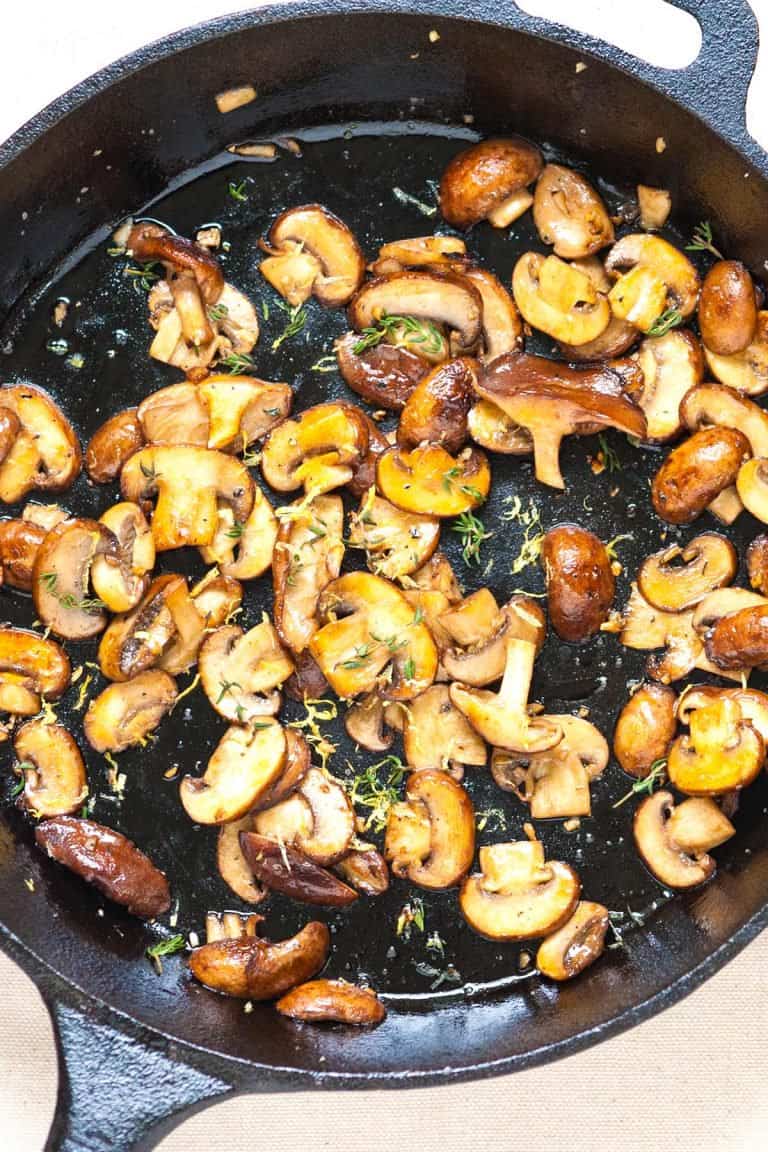How to Cook Mushrooms: A Beginner's Guide

Types of Mushrooms
Before we dive into how to cook mushrooms, let's take a look at some of the most popular types:
Button Mushrooms
Also known as white mushrooms, these are the most common type you'll find in grocery stores. They have a mild flavor and can be eaten raw or cooked.
Portobello Mushrooms
These large, meaty mushrooms are often used as a vegetarian alternative to burgers. They have a rich, earthy flavor and can be grilled, roasted or sautéed.
Shiitake Mushrooms
These are native to Asia and have a rich, smoky flavor. They are often used in soups and stir-fries.
Oyster Mushrooms
These have a delicate flavor and a velvety texture. They are often used in Asian cuisine and can be sautéed or stir-fried.
How to Cook Mushrooms
Sautéed Mushrooms
Sautéing is a quick and easy way to cook mushrooms. Here's how to do it:
- Clean the mushrooms by wiping them with a damp cloth or brushing off any dirt.
- Slice the mushrooms into even pieces.
- Heat a tablespoon of oil or butter in a pan over medium-high heat.
- Add the mushrooms and cook for 5-7 minutes, stirring occasionally, until they are browned and tender.
- Season with salt and pepper to taste.
Roasted Mushrooms
Roasting mushrooms brings out their natural sweetness and intensifies their flavor. Here's how to do it:
- Preheat the oven to 400°F.
- Clean the mushrooms by wiping them with a damp cloth or brushing off any dirt.
- Cut the mushrooms into even pieces.
- Spread the mushrooms out on a baking sheet.
- Drizzle with olive oil and sprinkle with salt and pepper.
- Roast for 15-20 minutes, stirring occasionally, until the mushrooms are tender and browned.
Mushroom Soup
Mushroom soup is a comforting and hearty dish that's perfect for a cold day. Here's how to make it:
- Clean the mushrooms by wiping them with a damp cloth or brushing off any dirt.
- Chop the mushrooms into small pieces.
- Melt a tablespoon of butter in a pot over medium heat.
- Add the mushrooms and cook for 5-7 minutes, stirring occasionally, until they are browned and tender.
- Add chopped onion and garlic and cook for another 2-3 minutes.
- Add chicken or vegetable broth and bring to a simmer.
- Simmer for 10-15 minutes, then puree the soup with an immersion blender or in a blender.
- Stir in a tablespoon of cream (optional) and season with salt and pepper to taste.
Benefits of Cooking Mushrooms
Cooking mushrooms has several benefits:
Improved Nutrient Absorption
Cooking mushrooms makes their nutrients more accessible to your body, especially the antioxidant ergothioneine.
Enhanced Flavor
Cooking mushrooms can bring out their natural sweetness and intensify their flavor.
Drawbacks of Cooking Mushrooms
Cooking mushrooms can also have some drawbacks:
Loss of Nutrients
Cooking mushrooms can cause some of their nutrients, such as vitamin C, to break down.
Reduced Volume
Cooking mushrooms can cause them to shrink in size, which may affect the quantity of your dish.
Conclusion
Cooking mushrooms is a great way to add flavor and nutrition to your meals. Whether you sauté, roast, or make soup, there are many ways to enjoy this versatile ingredient.
FAQ
Q: Can I eat mushrooms raw?
A: Yes, many types of mushrooms can be eaten raw, such as button mushrooms and shiitake mushrooms. However, some types, such as portobello mushrooms, should be cooked before eating.
Q: How do I store mushrooms?
A: Store mushrooms in a paper bag or a container with a paper towel to absorb any moisture. They will keep for up to a week in the refrigerator.
Q: Are mushrooms good for you?
A: Yes, mushrooms are a good source of several nutrients, including vitamin D, potassium, and antioxidants.
Q: Can I freeze mushrooms?
A: Yes, you can freeze mushrooms. First, clean and slice them, then spread them out on a baking sheet and freeze for a few hours. Once frozen, transfer them to a freezer bag or container and store for up to 6 months.
